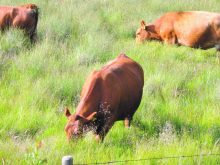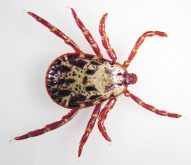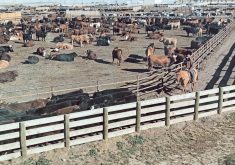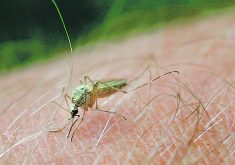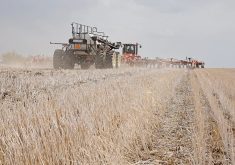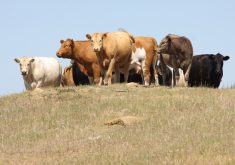B.C. researchers cross Red Angus with a Caribbean breed that has shorter coat and can better cope with hot temperatures
A scientist is working to create a composite Canadian breed of beef cattle that will be more resistant to the increasingly extreme swings in temperature expected under climate change.
A heat dome that killed thousands of cattle in Kansas underlines how bad things could get for Canadian beef producers, said John Church, British Columbia regional innovation chair in cattle industry sustainability at Thompson Rivers University in Kamloops.
Cattle in the state died from heat stress caused by extreme heat and humidity June 11 to 13. Temperatures in some parts of Kansas soared to more than 40 C.
Church’s concern about how climate change will affect the Canadian beef industry had already been heightened by heat waves that struck much of the country the previous summer. They helped cause widespread drought that federal Agriculture Minister Marie-Claude Bibeau called the worst in Western Canada in 70 years, forcing cattle producers to reduce their herds due to lack of feed.
Lytton, B.C., was destroyed by wildfire on June 30, 2021, the day after the village set a Canadian record of 49.6 C due to a heat dome that covered much of western North America. It followed a polar vortex that occurred only five months earlier, sparking a continent-wide cold snap as far south as Mexico that set numerous records across the prairie provinces.
“And so, we’ve been experimenting with trying to develop a new composite breed of cattle that can handle these incredible climatic extremes, which will no doubt get worse in the future,” said Church. Such abilities must also be accomplished without compromising meat quality, he said.
“You’ve probably heard of the Droughtmaster in Australia,” he said, referring to cattle bred to withstand conditions on that continent. “We’re hoping to develop an animal we’re calling the Climatemaster.”
A herd of about 18 cattle has been bred at the Buck Lake Ranch southeast of Kelowna, which is a commercial partner in the project. The initiative also includes Kwantlen Polytechnic University in B.C., which is helping to sequence the genomes of cattle and keep track of mutations.
Researchers have crossbred Senepol from the Caribbean island of St. Kitts with Red Angus, said Church. Senepol have a natural mutation called the slick gene that promotes traits such as short and sleek hair coats.
It allows them to deal with higher temperatures even better than some of the Bos indicus breeds from the Indian subcontinent, which tend to have tougher meat compared to Canadian beef, he said.
“And what I’m excited about is (Senepol) show tremendous hybrid vigour when crossed with our Angus breed, so what you end up with is an animal that isn’t visually much different from what our industry is already used to, but I believe they can have incredible traits,” he said.
“So, one of the things is you see a sparser hair coat and noticeably less hair in the ears, but we think there’s also a lot of internal changes that are taking place with respect to heat shock proteins and so forth.”
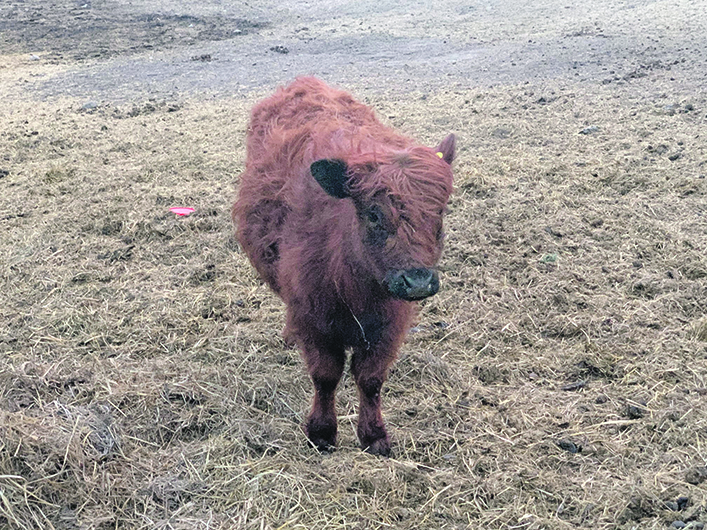
Such traits are based on naturally occurring mutations, avoiding potential problems with consumer acceptance faced by genetically modified organisms, said Church. “We’ve been crossbreeding animals conventionally for hundreds of years, right?”
Researchers are focusing on crossbreeding using artificial insemination, embryo transfer and in-vitro fertilization to rapidly increase the number of animals, he said. It is a different approach than the gene editing that is being undertaken in the United States to create heat-resistant cattle, he added.
Church said his team is also looking at lighter coat colours than the black favoured by many Canadian beef producers.
“Black absorbs the heat and white reflects it, so there’s a reason why we don’t wear black T-shirts when it’s over 30 C walking around on a bright, sunny day,” he said.
“It’s the same thing with cattle. Black animals suffer a lot more during periods of extreme heat than breeds with different coats such as white or red, so that’s why … we’re focusing more on Red Angus as opposed to Black.”
Although the cattle deaths in Kansas show what could ultimately happen in Canada, herds facing prolonged heat also experience declines in their average daily gain. It can occur long before the animals die, “and I think that’s emerging across North America,” said Church during an earlier interview.
It means cattle will need to be fed for longer periods due to heat waves and drought that also tends to reduce their sources of feed, he said. Cattle reproduction will also be affected as they try to avoid the heat, he added.
However, the problem of breeding heat-resistant cattle is complicated by the fact they must also be able to withstand colder temperatures, as demonstrated by the polar vortex that hit much of North America in 2021. The crossbred Senepol-Red Angus cattle have surprised researchers with this ability, said Church during a recent interview.
“Our initial results are showing that they are producing a much better winter hair coat than what I would have thought … and we had temperatures during calving in Kelowna that were down around -35 C and the calves were just fine.”
However, the research team is experimenting with a double hair coat mutation involving shaggy Scottish breeds such as the Galloway and Highland, said Church. Scientists are exploring whether it could co-exist with the slick mutation, allowing crossbred cattle to have a warm winter as well as a cool summer coat.
One of beef producers’ biggest input costs is winter feed. Research dating back to the 1970s has shown that cattle with the double hair coat mutation require substantially less feed, said Church.
Scientists have also sourced genetics from Akaushi cattle, which are a Japanese Wagyu beef breed that is light brown to reddish in colour. They were developed to live mostly outdoors, said Church.
They contain a unique gene that not only promotes meat with more marbling, but also changes the fat to a higher percentage of oleic acid, which is a monounsaturated fatty acid that is thought to have health benefits.

Akaushi are derived from draft and meat animals that were domesticated over thousands of years in climates in Korea and Japan ranging from hot and humid to snowy and cold, said Church. Besides promoting hybrid vigour, they could help improve carcass traits in crossbred animals, he said.
“So, the interesting thing I’ve heard about the Akaushi is that if you use that in a breeding herd, one of the selling features is you get more yield, but you also can improve your carcass grade at least one jump…,” he said.
“But the exciting thing is, I was really impressed with their winter hair coat. They were almost as hairy as calves as some of our Galloways and the Scottish Highland breeds.”
Church’s team has been working on the crossbreeding project for about three years. He expected it could take at least another three to five years before cattle could be offered to early adopters among beef producers.
The mix of Senepol with Red Angus is designed to ease acceptance by the beef industry, he said. “People always like to do what they’re doing … so the idea is that perhaps a full Senepol-Angus cross or a mixed composite breed would be much easier for producers to implement into the future, as opposed to just trying to come up with a brand-new, completely unique purebred animal.”






